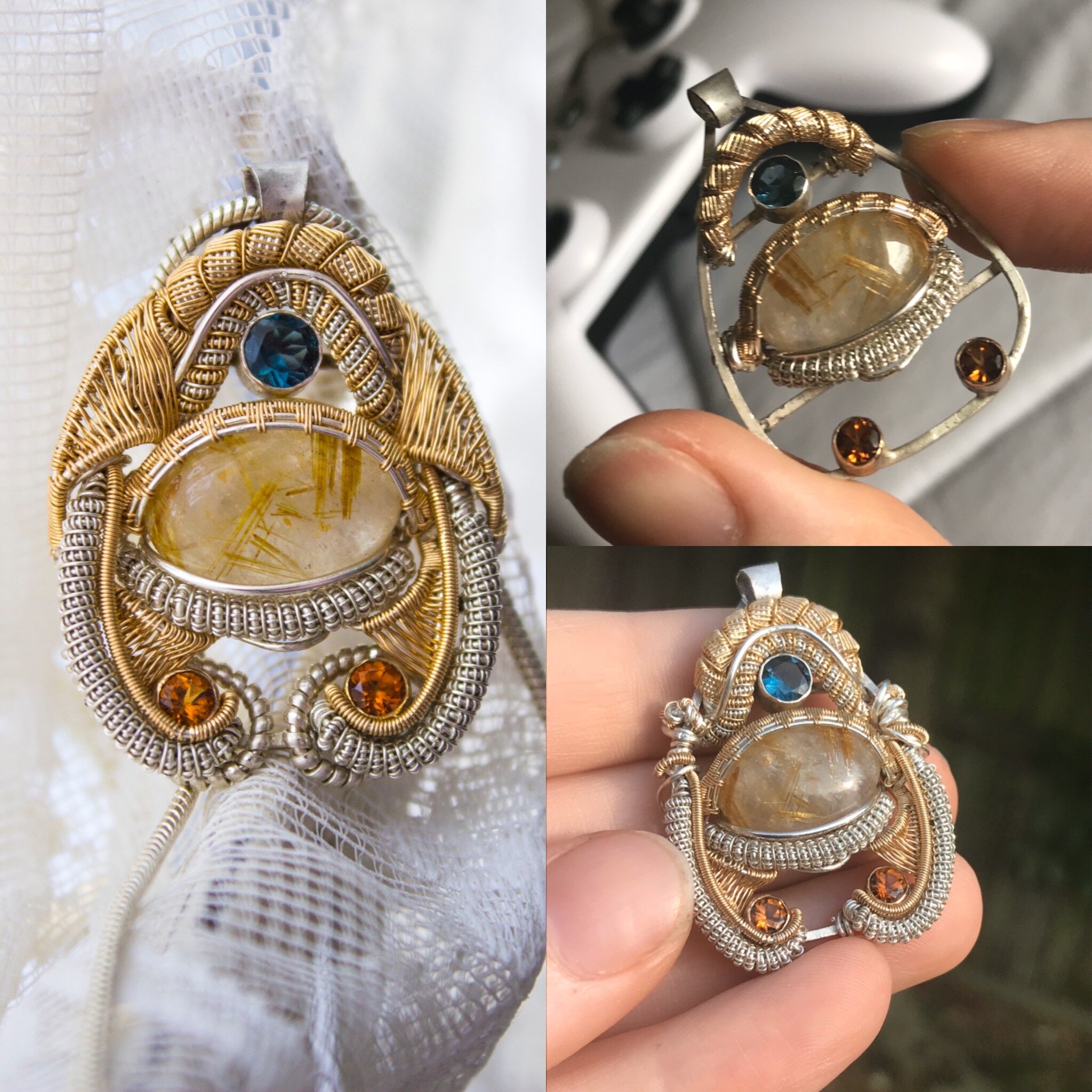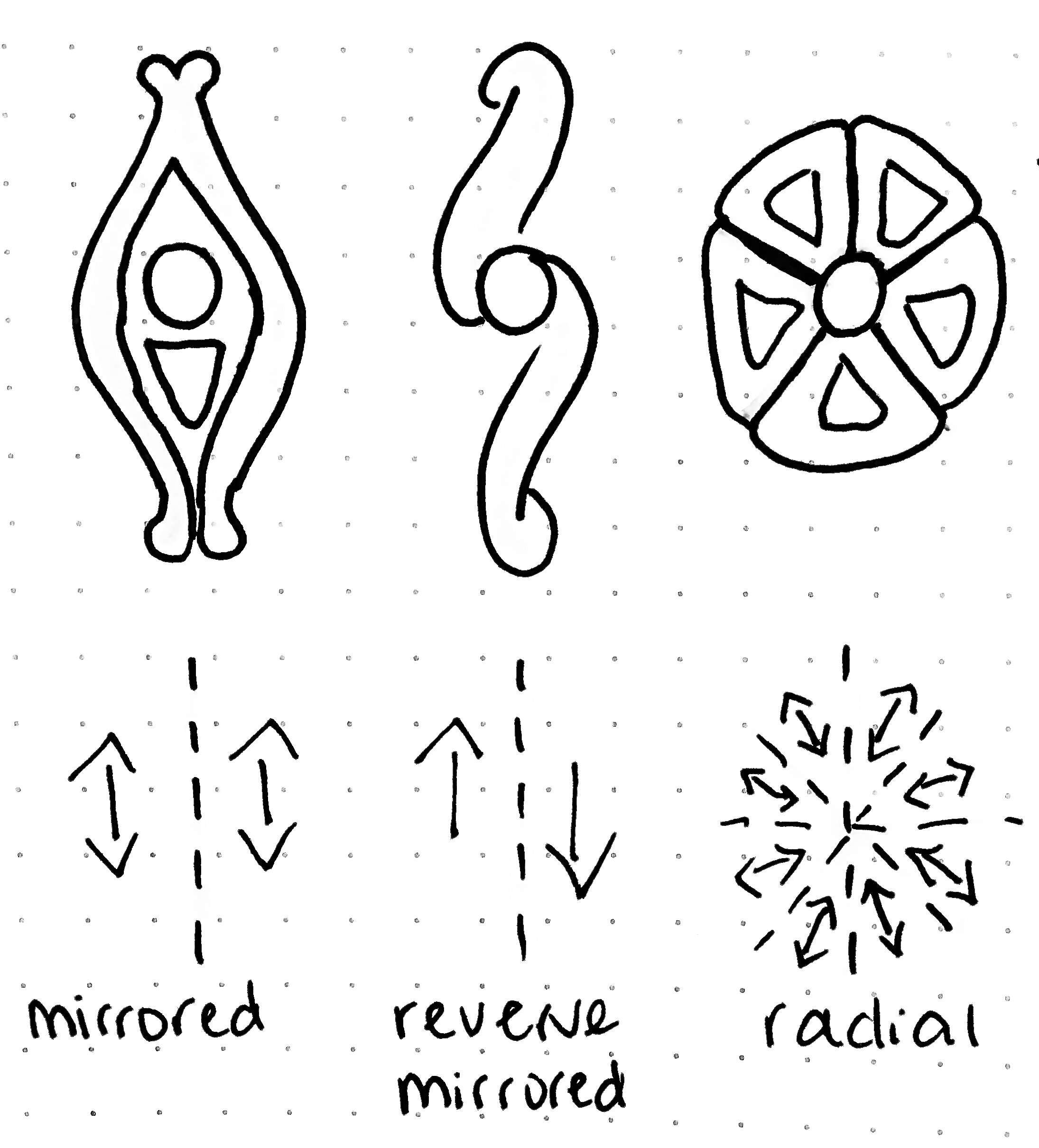Symmetrical Wire Wrapping Tips
It’s fairly simple in theory; just do the same thing on both sides right?
Yes, but actually accomplishing true symmetry is often harder than it looks. I’ll be showing you how we go about achieving a symmetrical design with tips and tricks along the way as well as the types of symmetrical designs you can create in wire wrapping.
The frame needs to be as symmetrical as possible.
If the bones are off, the piece will be too. The tie off points needs to be placed in the exact same location on each side.
Work in small sections.
After every single addition to the frame, check the symmetry and tweak it until it’s fully symmetrical.
Make mirrored versions of reflected elements.
Count the coils around a coil. They should be the same number. Measure the length of the two elements against each other.
The angles, curves and swirls will need to be mirrored, like seen in the picture. Meaning the measurements are the same, but if you twist it to the left, you twist to the right on the other side.
Tip: Flip it upside down to check the symmetry at both angles. This will help you to see any error with fresh eyes.
Mirrored: A vertical flip. The typical symmetrical design where two sides will reflect each other like a mirror.
Reverse Mirror: A vertical & horizontal flip. This is common in wrapping and may seem asymmetrical, but it’s the same design flipped two ways.
Radial: At least 3+ reflections stemming from a centered point.
Mirrored
This piece is a great example of mirrored symmetry.
Reverse Symmetry
This one shows reverse symmetry. Shapes are the same, but flipped vertically & horizontally.
We have yet to work in radial symmetry, but you can see plenty of wire wrappers experimenting with that type of symmetry.
People have always been drawn to symmetry. It can be found within all objects of beauty; nature, architecture, paintings, sculpture, and jewelry. If you’ve feared symmetry in the past, stop! As with all things, it takes time, practice, and a LOT of tweaking and checking along the way, but the design will be worth it in the end.
I suggest you take a look at Andrews article “Asymmetry: The Do’s and Don’ts” next if you haven’t already!







